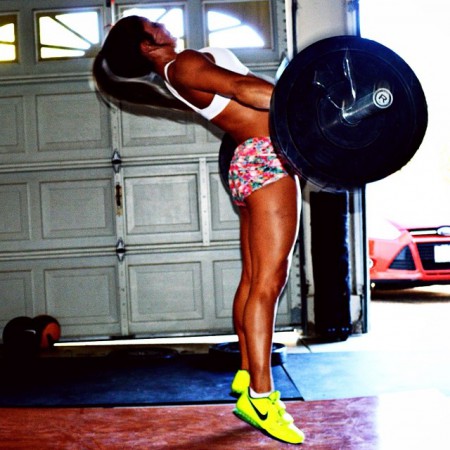Dr. Stuart McGill is a professor of spine biomechanics in the kinesiology department at the University of Waterloo and is renown as being an expert on back health. According to his academic profile, his department is concerned with (my paraphrasing) a) understand how the low back functions, b) understand how it gets injured, and c) create prehab and rehab methods based on their findings.
McGill is an expert with a variety of textbooks used in academia as well as folks in the fitness or strength and conditioning fields. This .pdf titled “Designing Back Exercise: from Rehabilitation to Enhancing Performance” from his website provides a collection of useful information. Points of emphasis in the article include:
– A proper history taking of a client
– Analyzing a client’s movement and determining faults (pg 4-5)
– A sequence of events for rehab (pg 6)
– The “big 3” stabilization exercises (pg 7)
– And developing athletic ability (pg 9)
McGill’s work is logical, easy, and effective. It has made me consider the importance of proper spinal function and positioning in lifting and athletics, and I’ve implemented them in my coaching in barbell mechanics. You’ve probably seen recent videos where I keep referring to a “strong, stable trunk” with an emphasis on “contracting the lower abs”, and I now teach it as a fundamental concept for barbell training.
Proper spinal mechanics in all movements is vital in order to prevent unnecessary injuries. I pay close attention to how trainees and athletes move, sit, stand, and lift, but in the past I have not put as much of a focus on “active spinal awareness”, which is basically making a concerted effort to align the trunk properly.
What does this mean for lifters? CrossFitters? Strength and conditioning athletes? It means that by utilizing contraction in the lower abs during lifts, we can maintain a neutral relationship between the trunk and the pelvis. If that relationship changes via too much lumbar extension or flexion, anterior or posterior pelvic tilt, or other instability, then it can at best not transmit force effectively and at worst result in an injury. It also means using spinal stabilization exercises in order to create endurance and habit for good spinal position.
Dr. McGill’s “big three” exercises can train help train this endurance and habit. In this video, he talks about four total exercises — the curl up variation, the bird dog, the side plank, and a moving plank on a ball. I know what you’re thinking: it looks like silly conventional fitness crap. These exercises aren’t supposed to build back strength, but instead they increase endurance in the back’s postural muscles so they can maintain a good, neutral position. The key to these movements is proper position, then endurance. They also teach the “skill”, or motor program, of what a correct spinal position is. Most people are in a perpetual state of instability with their spine; sitting in flexion or standing in hyperlordosis, for example. Ideally the trainee would work on their posture throughout the day in congruence with these prehab/rehab exercises, and they would improve their spine’s default position.
Given the increasing participants we have in lifting, CrossFit, powerlifting, Olympic weightlifting, and other related activities, there will always be injuries, particularly in the lower back and sacral area. Usually these injuries can be prevented with better awareness, coaching, and physical preparedness. By using the “big three” exercises in a warm-up and/or cool-down in training, trainees can be taught what is “correct” and self-diagnose what is “wrong”. Compliment it with improved coaching of the barbell lifts and it’s possible to prevent injuries, or at least the severity.
Give these movements a try in your training. Don’t expect them to have immediate impact, but look for long-term improvement. Start being self aware of what your trunk and pelvis are doing throughout the day, especially when lifting.



Sorry to post this again:
Hi Justin, got a question for you. I transitioned from low bar squatting to high bar squatting about a year ago. Have been consistent with training and seen very minimal improvement with my max. I have been doing 5/3/1 during this time, and I wonder if the orientation of the program to be more of intensity rather than volume has had anything to do with my general lack of progress. All other variables, such as proper nutrition, and adequate rest and recovery have remained at and above par. Do you recommend for people who are changing squat styles to go back to an LP or something similar to enforce proper technique?
More information would help me answer your question such as what is your squat strength and what program you were doing before 5/3/1. I’d also be interested in what your high bar mechanics look like.
All that being said, if someone wants to improve their squat, then they usually need to squat at least twice a week. The once-a-week nature of 5/3/1 won’t give most people enough work, and you may be right in thinking it isn’t giving you enough volume (given that it consists of ascending sets). In the absence of more information about you, I’d suggest increasing your weekly squat sessions.
–Justin
Prior to switching to a high bar squat I had a low bar 5RM of 320. My most recent high bar squat is 245 for 7 reps. When I made the transition to HB, I went belt-less, so it’s possible that my lack of progress has been an exposition of my weak trunk. Anyway, I do think squatting more than once a week would be helpful for me, I’m just not sure how to program it. Thanks for the response.
You would program it like you would anything that is weak and needs to get stronger: a linear progression approach would be ideal. If you have done one in the past, that doesn’t mean you will never do it again in the future. A simple 3×5 approach would work within the context of your program. If you will maintain 5/3/1, then pick another day to squat on and do it then. It may not be a big deal to squat a bit lighter if you needed to on that other day, but that depends on a few things.
–Justin
As someone who just strained my QL, restrained and is having problems with proper squat form, this helps me quite a lot. I’m doing the glute bridges, but some of these variations, and the planning to be taken I haven’t considered. More stuff like this, for mobility work, self-rehabing and important information all weightlifters, powerlifters and athletes need is awesome.
P.S., the shirt I just got in the mail from you guys is amazing. Can’t keep the cardio bunnies away from me!
Would these movements be good as a part of a warmup to groove the pattern?:)